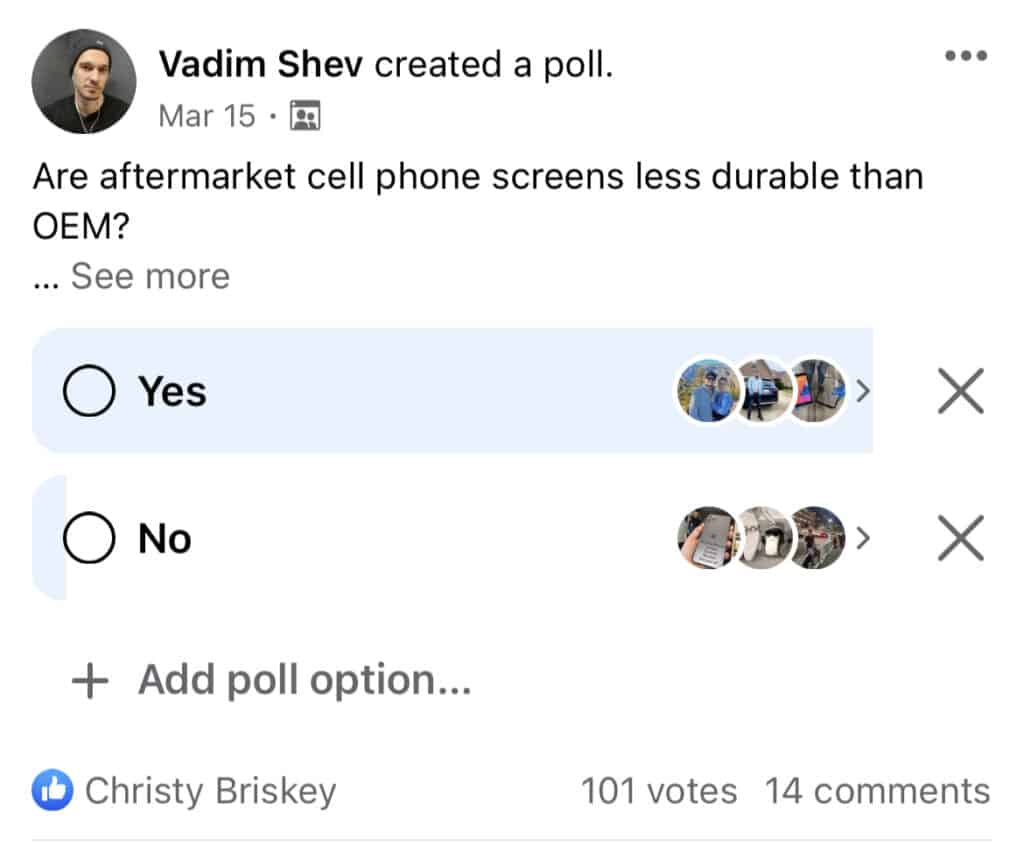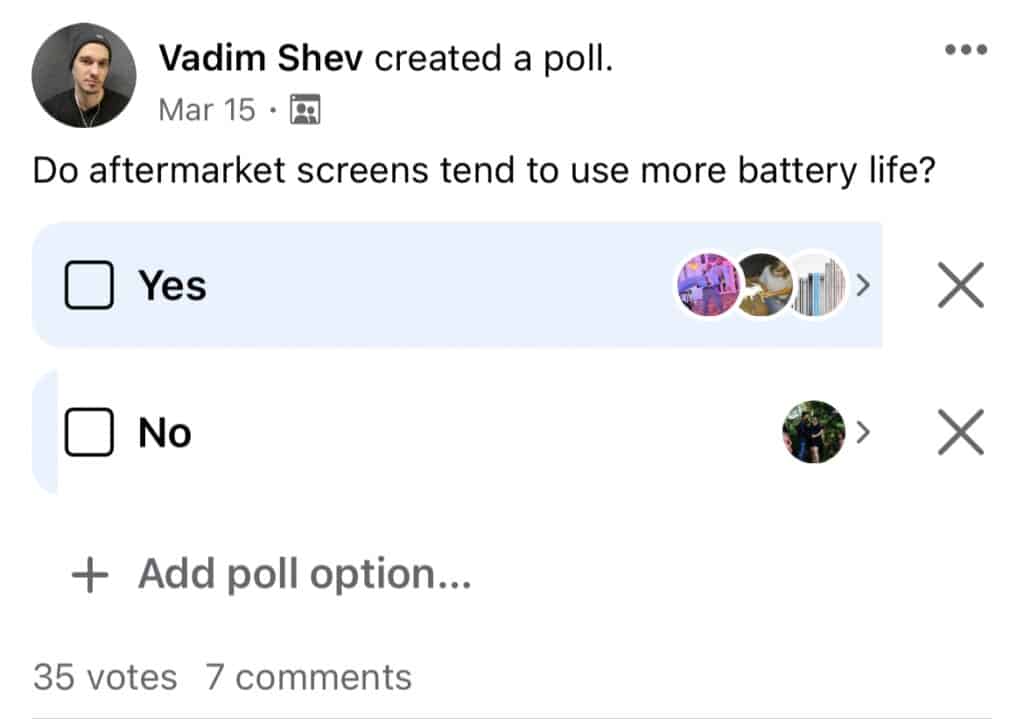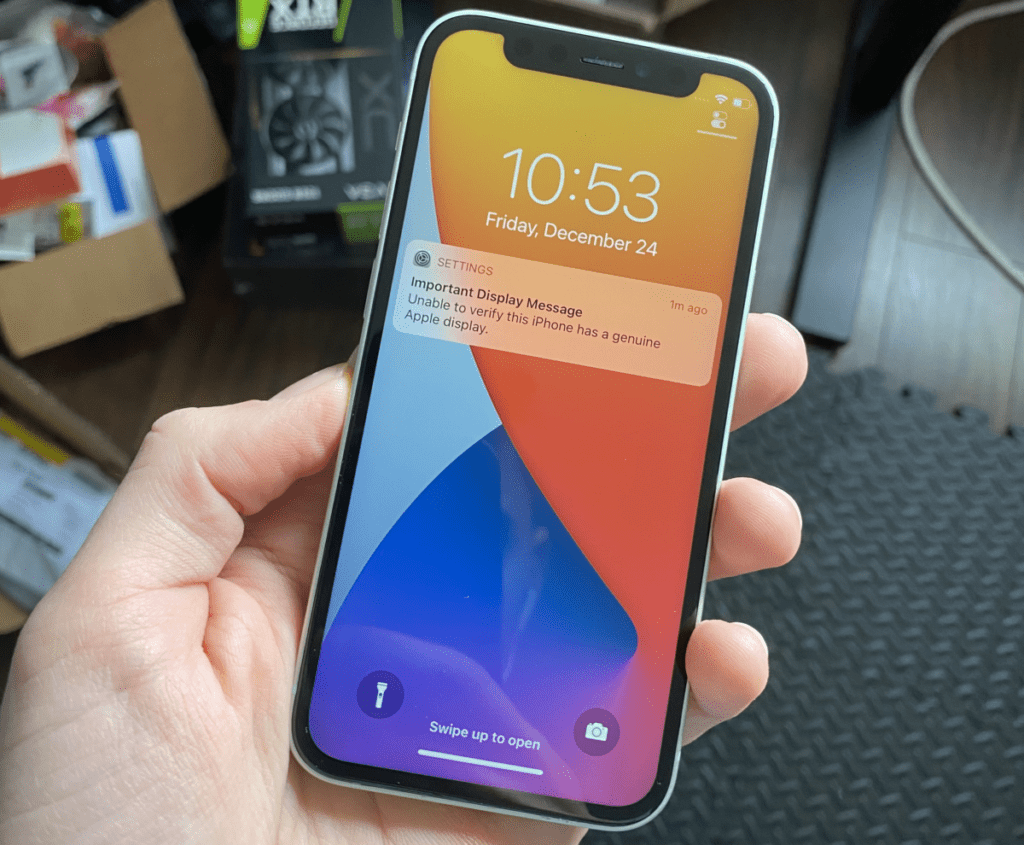Wondering what the difference between aftermarket vs original iPhone screens is? Whether you’re repairing your iPhone and unsure which screen to choose or you want to repair before you sell your phone, we’ll explain the differences between aftermarket and OEM screens.
There are several notable differences between aftermarket and original iPhone screens. To put it simply, aftermarket screens are non-genuine displays. These screens are manufactured by a third-party company versus being manufactured by Apple. The OEM or original screens are the screens that come on your iPhone out of the box. These screens are manufactured by Apple and meet all quality standards.
What Are Aftermarket and Original Screens?
There are several different types of aftermarket and OEM cell phone screens currently on the market.
What is an Original (OEM) iPhone screen?
Original iPhone screens also known as OEM are screens made by the phone manufacturer. This is the screen that came with your cell phone when it was new.
There are several grades of OEM iPhone screens currently on the market.
- Service Pack: This is a brand new iPhone screen directly from Apple. This is typically the most expensive option.
- OEM Pull: A used iPhone screen that was removed from a device for parts.
- Refurbished OEM: An iPhone screen that was refurbished with aftermarket glass to make it look and work like new. This is the cheapest option of the 3.
What is an Aftermarket iPhone Screen?
Aftermarket iPhone screens are screens that are manufactured by manufacturers other than Apple. In other words, aftermarket screens are screens that did not originally come on your iPhone.
There are several different types of aftermarket iPhone screens on the market.
- LCD: The cheapest aftermarket screen that is usually used on older iPhone models.
- Incell: Combine digitizer and LCD into a single-layer display.
- Hard OLED: Manufacturers using a hard glass substrate. Typically cheaper but more fragile.
- Soft OLED: Manufactured using a flexible plastic substrate. More expensive but more durable.
What is the Difference Between Original and Aftermarket iPhone Screens?
There are many notable differences between original and aftermarket iPhone screens. This includes characteristics such as durability, cost, and vibrance.
| Original iPhone Screen | Aftermarket iPhone Screen |
|---|---|
| Manufactured by Apple Certified Manufacturers | Manufactured by third-party |
| Standard refresh rates 60 Hz – 120 Hz | Lower refresh rates |
| Sit flush in frame | Are usually thicker than OEM |
| Bright and vibrant screen | Screen brightness is dimmer |
| Uses Gorilla Glass | Aftermarket glass (may be weaker) |
| More expensive | Cheaper cost |
| Normal battery use | Tends to use more battery |
Manufacturer
Currently, Apple sources its displays from several reputable manufacturers such as Samsung, LG, Sharp, BOE, and Japan Display Inc. Aftermarket copy screens, on the other hand, are manufactured by companies such as TianMa, Longteng, ShenChao, KingWo, and JingDongFang.
Refresh Rate
The display refresh rates are another difference between original iPhone screens and copy aftermarket iPhone screens. The standard display refresh rate on the iPhone varies from 60 hz to 120hz depending on the model. In contrast, aftermarket iPhone screens’ refresh rate is usually a bit lower.
Display Thickness
Another noticeable difference between OEM and aftermarket iPhone screens is the thickness of the display. Aftermarket screens are usually thicker than original screens. As a result, the aftermarket screens will usually not sit completely flush in the frame. It’s not a major difference but it does cause a slightly raised edge.
Brightness & Vibrance
Another difference between original and aftermarket iPhone screens is the color and vibrance of the display. Aftermarket displays tend to be dimmer and less vibrant than original displays.
Durability
Original iPhone screens use Gorilla Glass, specifically designed and manufactured for cell phones and tablets. This glass is scratch resistant and much stronger than regular glass. On the other hand, aftermarket screens will typically use cheaper less durable glass.
To confirm that aftermarket iPhone screens are indeed less durable than original OEM we surveyed 101 cell phone repair shops. We asked cell phone repair shops if aftermarket cell phone screens are less durable than OEM. We were not surprised to find that 96% of cell phone repair shops believed that aftermarket screens are less durable than OEM.
Based on this information it’s safe to assume that aftermarket iPhone screens tend to break easier than their OEM counterparts.

| Survey: Are aftermarket cell phone screens less durable than OEM? | Results |
|---|---|
| Yes | 97 |
| No | 4 |
Cost
Aftermarket screens are usually much cheaper than OEM iPhone screens. For instance, an original service pack screen from Apple is $267.96 for the iPhone 12. With the return credit, it comes down to $234.36. On the other hand, an aftermarket iPhone 12 screen ranges from $36.13 to $83.44.
Battery Use
Another notable difference between OEM and aftermarket iPhone screens is that aftermarket screens tend to use more battery life. This is especially true for LCDs and in-cell screens.
We surveyed 35 cell phone repair shops to get their expertise. Surprisingly 97% of cell phone repair shops reported that aftermarket cell phone screens tend to use more battery life than original screens.

| Survey: Do Aftermarket Phone Screens Use More Battery? | Results |
|---|---|
| Yes | 34 |
| No | 1 |
How Do You Identify an Original & Aftermarket iPhone screen?
There are several ways to identify whether your iPhone has an original or aftermarket screen. If you have an iPhone 11 or newer you can check in the settings to see if your display has been replaced. If you have a device older than the iPhone 11 you will need to check the physical characteristics of your screen to determine if it’s OEM.
Checking if Your iPhone OEM Display
If you have an iPhone 11 or newer you can check if your screen has been replaced in the settings. If your display is aftermarket it will state “unable to verify this iPhone has a genuine display” in the settings. It’s important to note that if an original OEM screen was installed by anyone other than an Apple Authorized Service Provider it will still display this message. There are several ways to remove the Apple Display Message which can be found here.

Identifying if Your iPhone Has an Aftermarket Screen
However, if you have an iPhone XR or older you will not be able to check if your display is genuine in the settings. Instead, you can check other notable characteristics to see if your display is original or aftermarket.
One way to check if your iPhone screen is aftermarket is by examining the edges of the screen. An aftermarket screen will have a slightly raised lip above the housing. Whereas an original screen will normally sit flush with the frame.
Another way to know if your iPhone screen is aftermarket is by comparing it side by side with another iPhone that has not been repaired. You may notice the aftermarket screen will have a slightly different shade of glass. Additionally, the brightness and vibrance may be slightly off as well.
Aftermarket vs Original iPhone Screen: Which One is Better?
Not sure whether you should get an aftermarket or an OEM original screen? When choosing between an aftermarket or original screen, several factors must be considered. An OEM screen is typically top-notch quality but is noticeably more expensive. On the other hand, an aftermarket screen may be slightly lower quality but significantly cheaper. If you’re looking for the best quality, go for an original Apple display. If you have a budget in mind it’s best to go for an aftermarket screen.